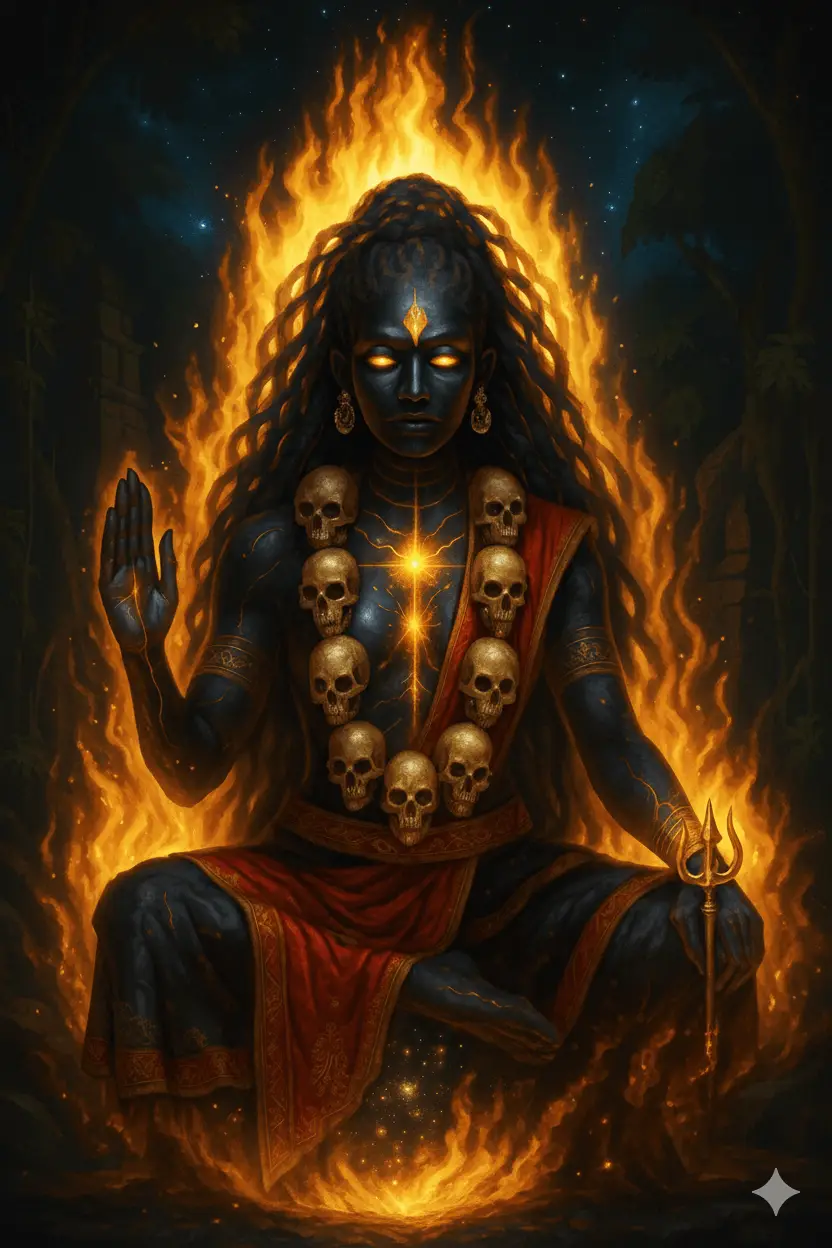When most people think of Diwali, they picture beautiful oil lamps, colorful rangoli patterns, and celebrations of prosperity. But beneath the surface of this beloved festival lies a rich tapestry of tantric symbolism and spiritual practice that goes way deeper than Instagram-worthy decorations.
Let's be real – when you hear "tantra," your mind probably doesn't jump to Diwali celebrations. That's because most people have been fed a pretty narrow (and honestly, misleading) view of what tantra actually is. True tantric philosophy isn't about what you've seen in movies or read in questionable self-help books. It's a profound spiritual system focused on awakening consciousness and recognizing the divine in everything.
So how does this connect to Diwali? More than you might think.
Why Tantric Practitioners Get Excited About Diwali
In authentic tantric traditions, Diwali isn't just another festival on the calendar. It's what practitioners call Mahanisha – literally "the great night." This new moon period is considered one of the most spiritually potent times of the year, when the energetic conditions are perfect for inner transformation work.
Think of it like this: if regular days are like trying to tune into a radio station with lots of static, Diwali night is when the signal comes through crystal clear. The veil between the material and spiritual worlds becomes thinner, making it easier to access deeper states of consciousness.

This is why tantric scriptures specifically mention Diwali (along with Navaratri and Dussehra) as times when spiritual practices are most effective. It's not superstition – it's recognition of natural energetic cycles that affect our consciousness.
The Real Meaning Behind Goddess Lakshmi
Sure, everyone knows Diwali honors Goddess Lakshmi, the deity of wealth and prosperity. But here's where tantric understanding gets interesting – Lakshmi represents way more than your bank account balance.
In tantric philosophy, Lakshmi embodies spiritual abundance. She's the energy of inner wealth – the richness that comes from awakening to your true nature. When tantric practitioners honor Lakshmi during Diwali, they're not just asking for material success (though there's nothing wrong with that). They're inviting the energy of spiritual prosperity into their lives.
The famous legend of Lakshmi emerging from the cosmic ocean during Samudra Manthana? That's pure tantric symbolism right there. The churning of the ocean represents the inner work we do – the conscious effort to extract the nectar of enlightenment from the depths of our own consciousness.
Light, Shadow, and Inner Transformation
Here's where things get really interesting from a tantric perspective. All those diyas (oil lamps) you light during Diwali? Each one represents awakening an inner flame of consciousness.
But tantric philosophy doesn't just focus on the light – it acknowledges the shadow. The darkness that the lamps dispel isn't just metaphorical ignorance. It represents the unconscious patterns, fears, and limitations that keep us from recognizing our true nature.
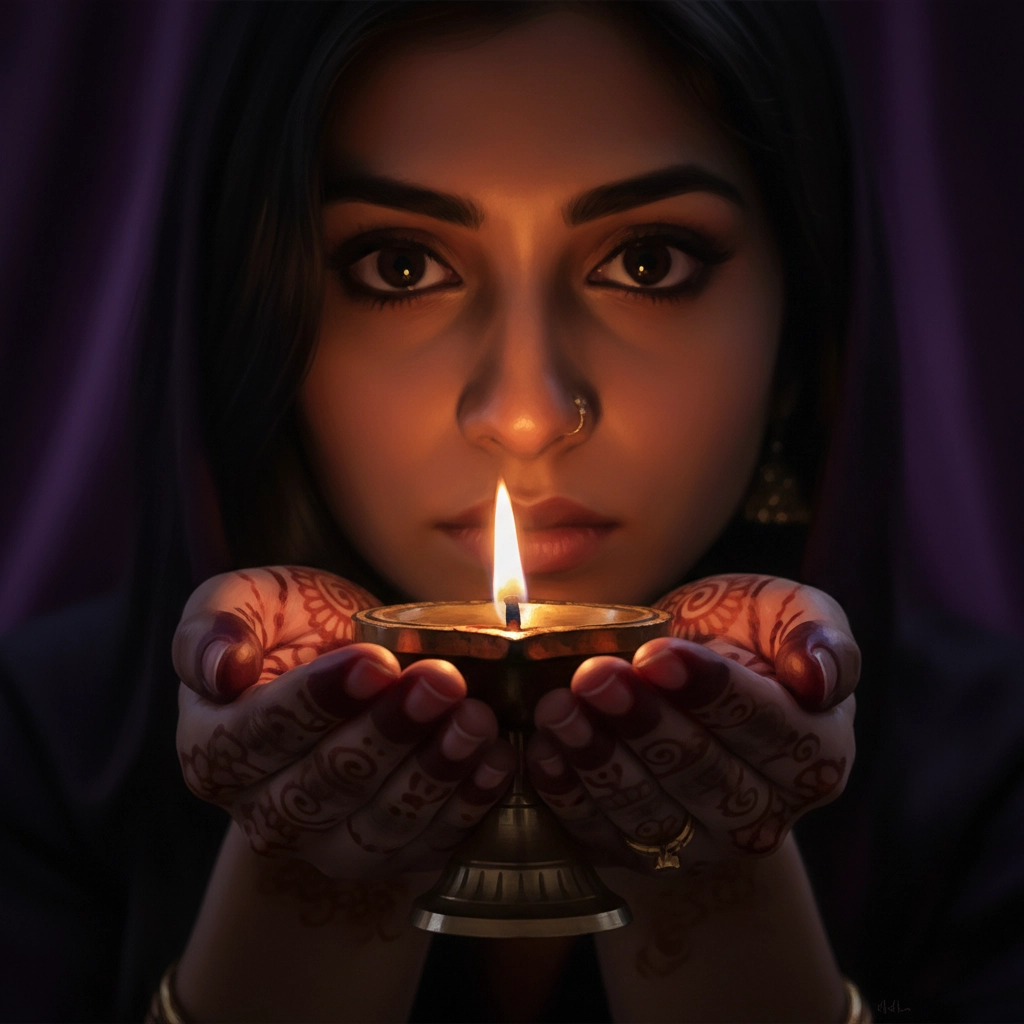
This is where tantric shadow work connects beautifully with Diwali symbolism. The festival celebrates the victory of light over darkness, but tantric practice teaches us that true illumination comes from integrating both – not just pretending the darkness doesn't exist.
When you light those lamps during Diwali, you're not just performing a ritual. You're engaging in a practice of conscious awakening, illuminating the areas of your psyche that usually remain hidden.
The Deeper Purpose of Diwali Cleaning
Ever wonder why everyone goes into deep-cleaning mode before Diwali? From a tantric perspective, this isn't just about having a spotless house for guests.
The cleaning and purification practices represent mental purification – clearing out the accumulated stress, negative thought patterns, and energetic debris that clouds our natural state of awareness. When tantric practitioners clean their spaces before Diwali, they're simultaneously cleaning their inner environment.
This connects to the tantric principle of recognizing the connection between outer and inner reality. Your external environment reflects and influences your internal state. By creating sacred, clean space externally, you're supporting the inner work of spiritual purification.
The Five-Day Journey of Transformation
The extended celebration of Diwali over five days isn't just about stretching out the party. Each day represents a stage in the tantric journey of transformation:
Dhanteras begins with honoring Dhanvantari (the divine physician) – recognizing that spiritual work requires healing and balance.
Naraka Chaturdashi traditionally involves cleansing practices – the tantric principle of purification before deeper work.
Main Diwali night becomes the peak moment for inner illumination and consciousness work.
Govardhan Puja celebrates sustenance and protection – acknowledging the support needed for spiritual growth.
Bhai Dooj focuses on relationships and connection – recognizing that awakening happens in relationship, not isolation.
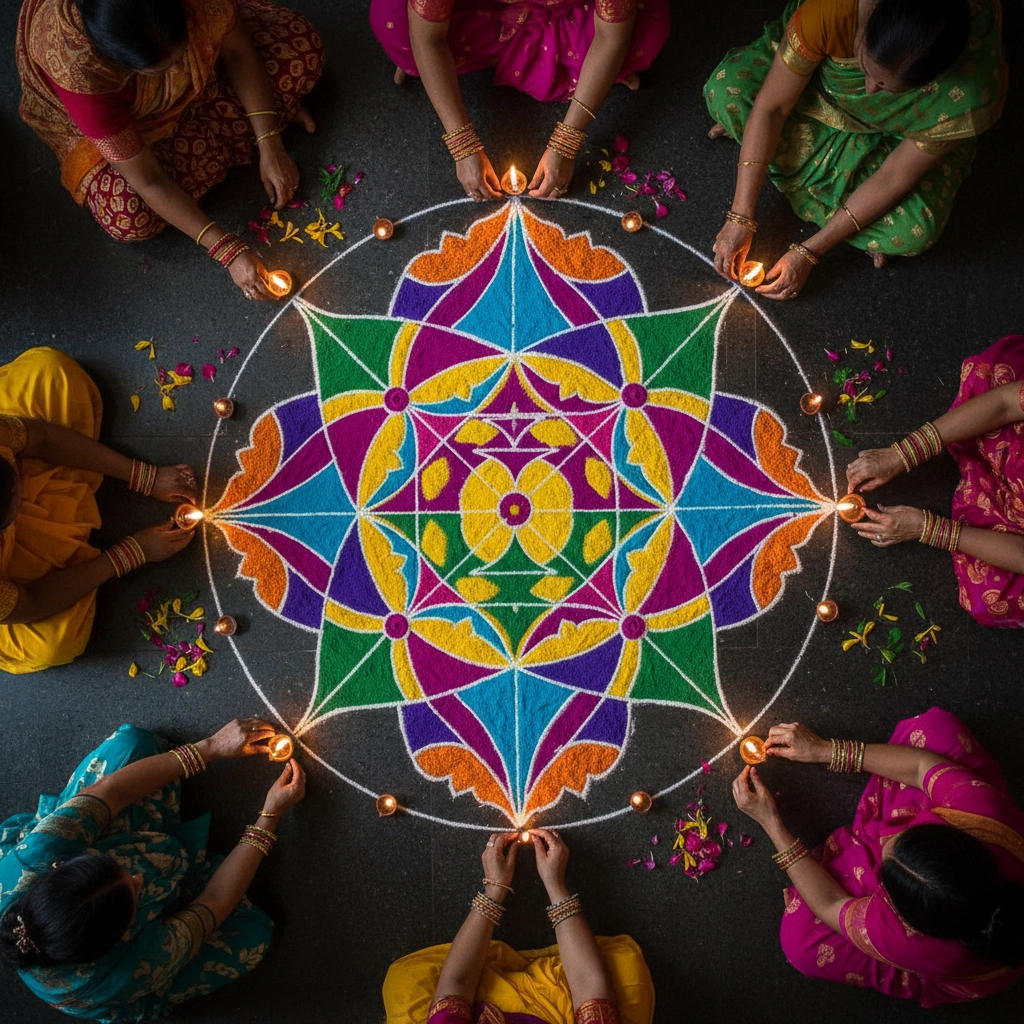
Tantra, Mantra, and Yantra During Diwali
Here's where we get into some authentic tantric territory. True tantra involves three interconnected elements:
- Tantra relates to the physical body and embodied practice
- Mantra involves sound, vibration, and mental cultivation
- Yantra encompasses sacred geometry and ritual objects
During Diwali, all three come together beautifully. The rangoli patterns you create? Those are yantras – sacred geometric forms that help focus and channel spiritual energy. The prayers and chants? Pure mantra practice. The ritual actions of lighting lamps and offering food? Embodied tantric practice.
Beyond the Instagram Aesthetic
Look, there's nothing wrong with beautiful Diwali decorations and social media posts. But tantric understanding invites us to go deeper than the aesthetic surface.
When you arrange those diyas in patterns, you're not just creating pretty lighting – you're working with sacred geometry that helps align and focus spiritual energy. When you offer sweets and flowers to Lakshmi, you're not just following tradition – you're practicing the tantric principle of consecration, recognizing the divine in material offerings.
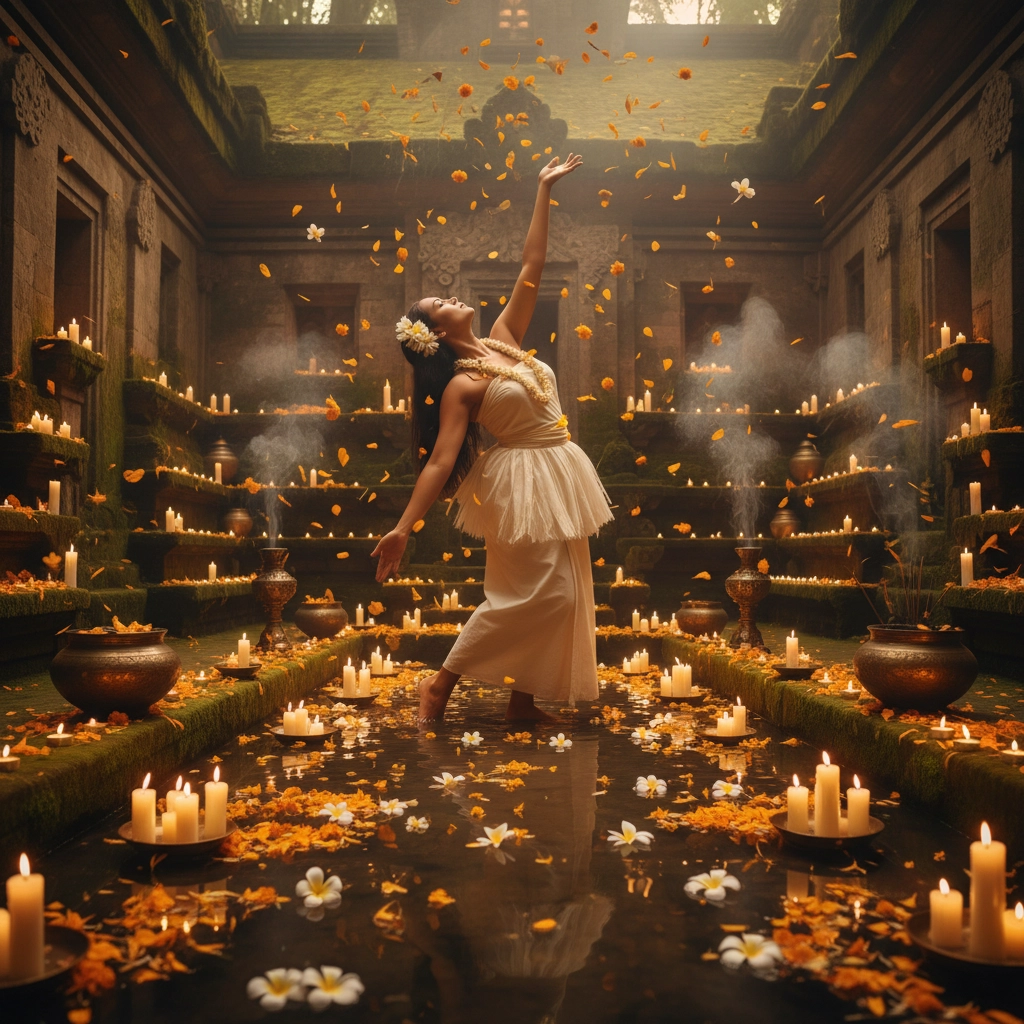
The key is conscious participation. Instead of just going through the motions, tantric approach to Diwali involves bringing full awareness to each action, recognizing the spiritual significance behind the practices.
Common Misconceptions to Clear Up
Since we're talking about tantra and spiritual practice, let's address some elephant-in-the-room misconceptions:
Misconception: Tantra is primarily about sexuality or exotic practices.
Reality: Authentic tantra is a comprehensive spiritual philosophy focused on consciousness awakening.
Misconception: You need special initiations or secret knowledge to connect with tantric aspects of Diwali.
Reality: The fundamental principles are accessible to anyone willing to approach the festival with conscious awareness.
Misconception: Tantric practice during Diwali requires abandoning traditional celebrations.
Reality: Tantric understanding actually deepens appreciation for traditional practices by revealing their spiritual significance.
Practical Integration
So how can you bring tantric awareness to your Diwali celebration? Start simple:
Pay attention to your inner state as you clean and prepare your space. Notice how the external purification affects your mental clarity.
When lighting diyas, take a moment to recognize what inner darkness you're ready to illuminate.
Approach Lakshmi worship not just as request for material abundance, but as invitation for spiritual richness.
Use the five-day structure as a framework for inner transformation, not just external celebration.
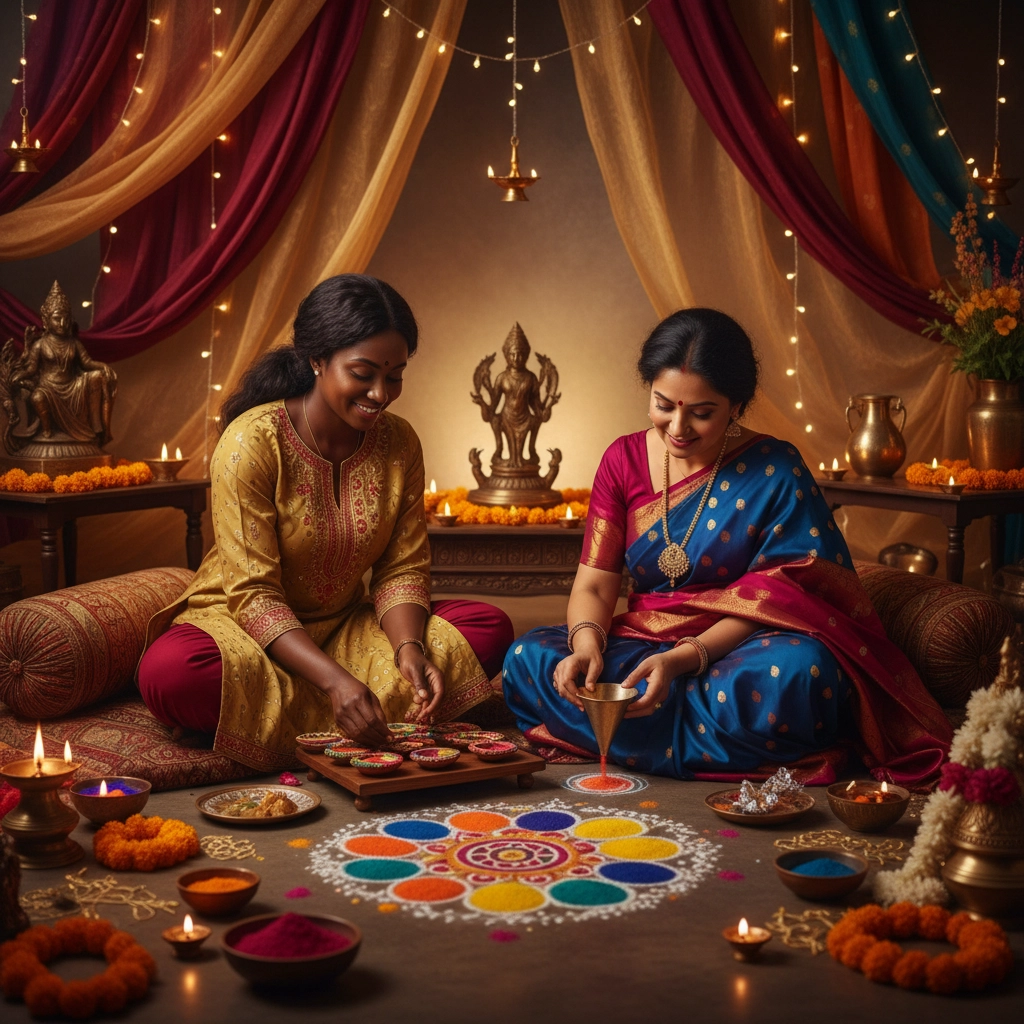
The beauty of connecting tantric understanding with Diwali is that it doesn't require you to completely change how you celebrate. Instead, it invites you to bring deeper awareness to practices you might already be doing, revealing layers of meaning that have been there all along.
This Diwali, as you light those lamps and welcome Lakshmi, remember that you're participating in an ancient technology of consciousness – one designed not just to bring prosperity to your life, but to awaken the light of awareness that has always been shining within you.
